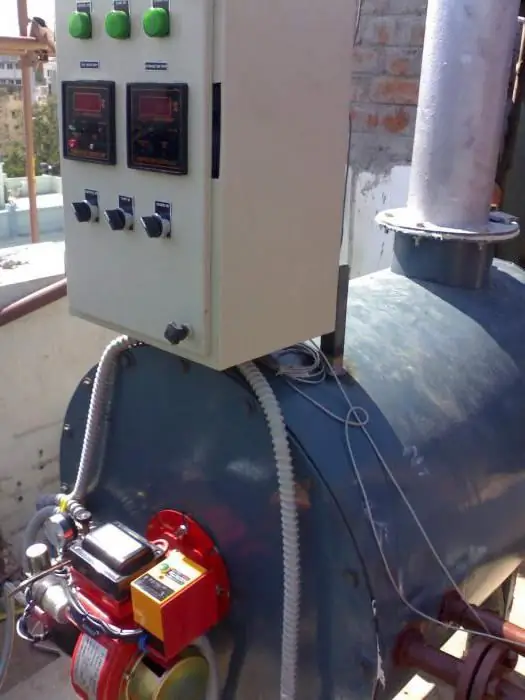2026 Author: Howard Calhoun | [email protected]. Last modified: 2025-01-24 13:10:41
Ethylene glycol is a slightly oily, odorless, viscous liquid. It is highly soluble in alcohols, water, acetone and turpentine. Ethylene glycol is the basis for automotive and household antifreeze, as it lowers the freezing threshold of water and aqueous solutions. An interesting fact is that even a frozen liquid does not solidify, turning into ice, but simply becomes loose. In addition, ethylene glycol aqueous solutions do not expand and therefore do not damage the pipes and radiator in the car.

This substance is very hygroscopic, that is, it absorbs water well from the environment (air, various gases). The industrial production of ethylene glycol has been established at many chemical enterprises. It should be remembered that this substance is poisonous, although it has a sweetish aftertaste. Therefore, when interacting with it, you need to take precautions. Vapors of this substance are not very toxic and can only be hazardous to he alth if they are used for a long time.inhalation. Ethylene glycol is a combustible compound. High concentrations of its vapors in the air are explosive, but when mixed with water, ethylene glycol loses these properties.

Application
Ethylene glycol is used in various fields and industries: automotive, chemical, aviation, textile, electrical, oil and gas. One of the most important areas of application of this substance is the production of coolants and antifreezes. Due to the high demand, the industrial production of ethylene glycol has become huge. This product can be used as a solvent for paint products.
Methods for obtaining ethylene glycol
There are a lot of methods for obtaining this substance, but not all of them are suitable for industrial production. One of the most popular methods is to obtain ethylene glycol from ethylene by oxidizing the latter with oxygen in the presence of a silver catalyst, and then subsequent hydration. However, another technique is still in demand.

Production of ethylene glycol by hydrolysis of ethylene chlorohydrin. In both cases, the ethylene oxide hydration reaction is carried out in the presence of catalysts and at an elevated temperature. In the literature there is also a method in which the production of ethylene glycol is carried out using the interaction of water, formaldehyde and carbon monoxide. Glycolic acid obtained in the first stage is subjected to esterification andreceive ether. It is then hydrogenated to ethylene glycol. This technique is used in the USA.
The resulting product is thoroughly cleaned, because even a small content of third-party impurities adversely affects its properties. For example, in the presence of substances such as polyglycols and diethylene glycol in the composition of ethylene glycol, its thermal stability is significantly reduced. Therefore, in a high-quality product, the percentage of third-party compounds should be minimal. This is especially true for chlorine-containing substances and aldehydes. The mass fraction of the main compound must be at least 99.5%.
Recommended:
Modern production. The structure of modern production. Problems of modern production

Developed industry and a high level of the country's economy are key factors influencing the we alth and well-being of its population. Such a state has great economic opportunities and potential. A significant component of the economy of many countries is the production
Gas production. Gas production methods. Gas production in Russia

Natural gas is formed by mixing various gases in the earth's crust. In most cases, the depth of occurrence ranges from several hundred meters to a couple of kilometers. It is worth noting that gas can form at high temperatures and pressures. In this case, there is no access of oxygen to the place. To date, gas production has been implemented in several ways, each of which we will consider in this article. But let's talk about everything in order
Propylene glycol - what is it? Chemical properties, application

Propylene glycol - what is it? Composition of the molecule, structure, physical and chemical properties of matter. The use of propylene glycol in the industry: food, cosmetics. Application for technical purposes, in medicine
Industrial boilers: description, types, functions. Industrial expertise of boilers

The article is devoted to industrial boilers. The varieties of such units, functions and nuances of the examination for the safety of equipment are considered
Industrial safety of hazardous industrial facilities: rules and requirements

In modern production, unfortunately, there are accidents. However, there are special instructions, the observance of which helps to prevent disasters. Consider further the basic rules of industrial safety

